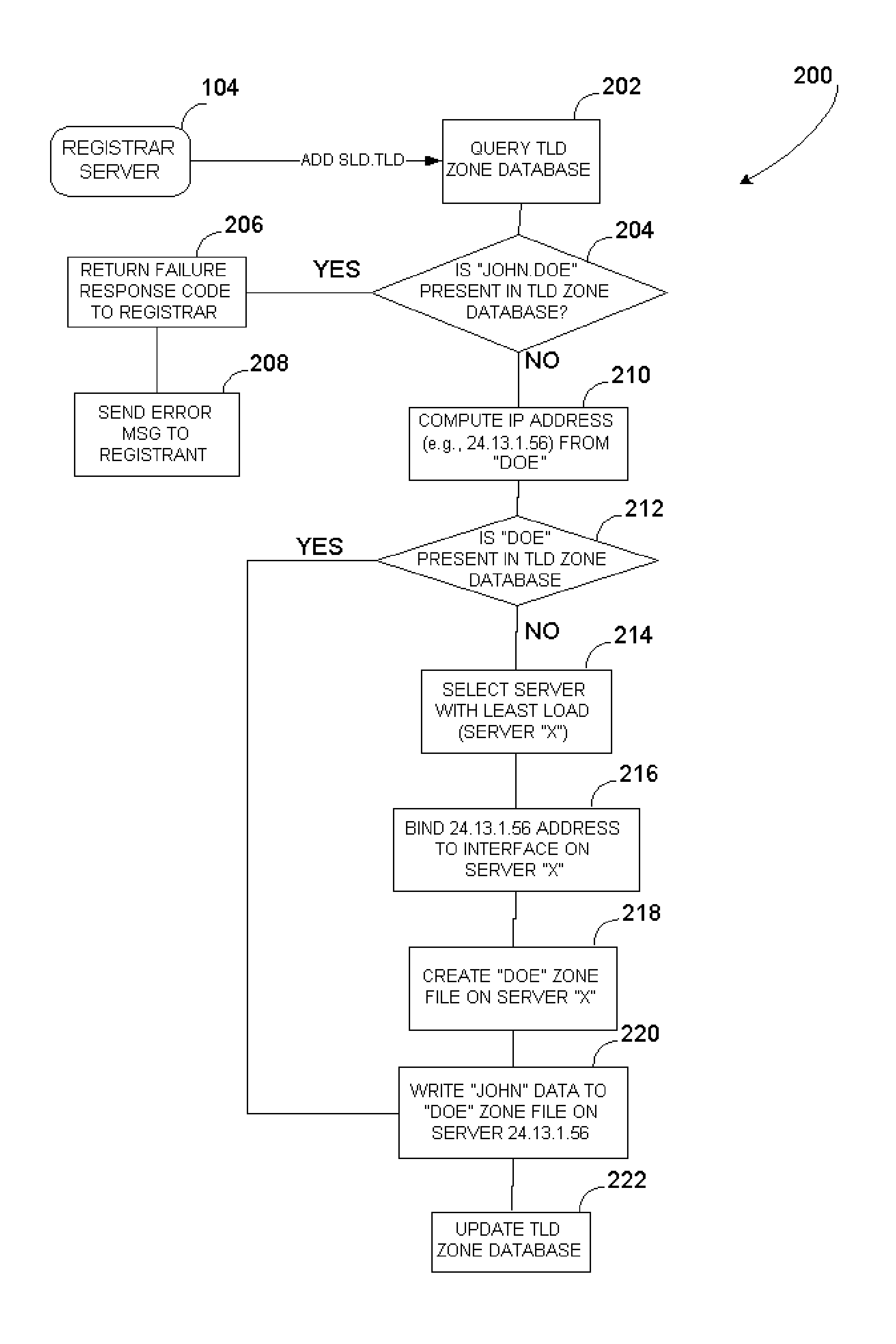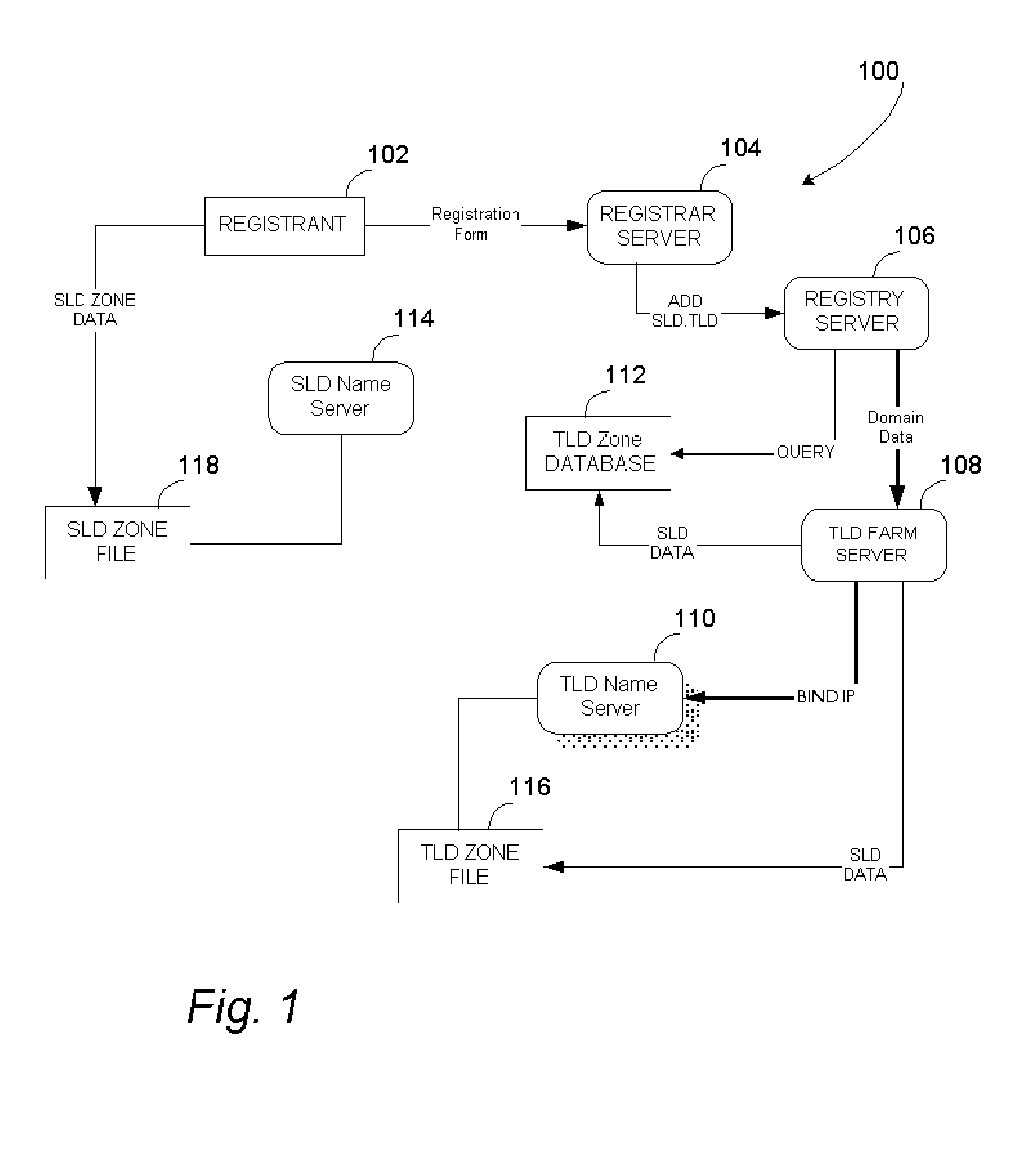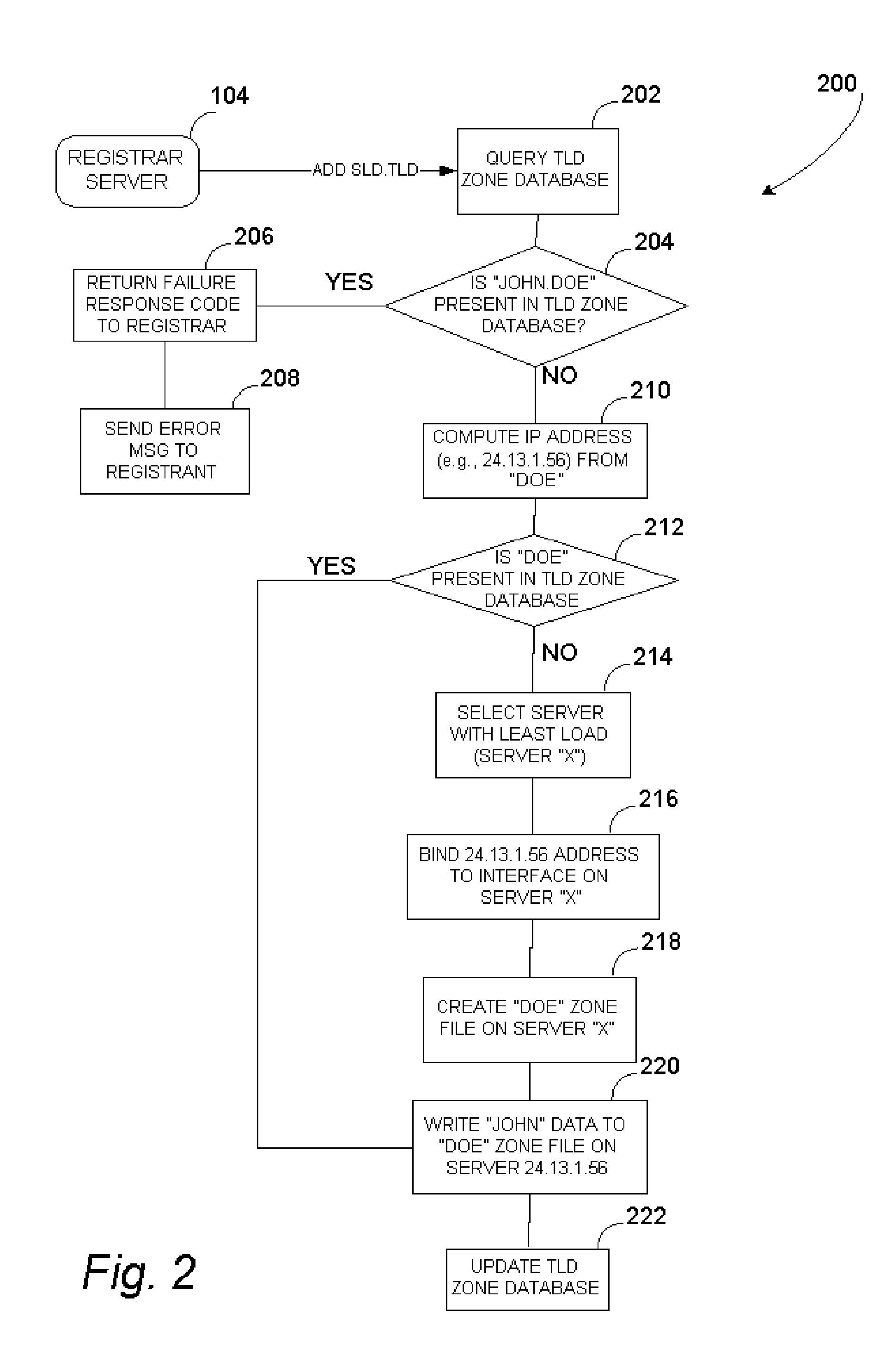Systems and methods of registering and utilizing domain names
a domain name and system technology, applied in the field of domain names, can solve the problems of limiting the number of icann top level domains available to users, limiting the number of icann domain names available to users, and affecting the service life of users, so as to achieve the effect of attracting more consumers
- Summary
- Abstract
- Description
- Claims
- Application Information
AI Technical Summary
Benefits of technology
Problems solved by technology
Method used
Image
Examples
Embodiment Construction
[0028] The present invention is directed to methods and systems used to provide and use unlimited top-level domain names that are created on demand, in parallel with those specified by the Internet Corporation for Assigned Names and Numbers (ICANN) or other entity having the governmentally or community granted authority to approve or create standardized top-level domain names.
[0029] In particular one embodiment of the present invention provides systems and methods for registering a non-ICANN TLD name by mapping it to an IP address using a predefined mapping function, assigning the resulting IP address to a server system that acts as the name server for TLD name, and subsequently using the said predefined function when a user enters an Internet address containing said TLD name on a client computer in order to compute the IP address of the said name server and access it.
[0030] Throughout the following description, reference will be made to various implementation-specific details, in...
PUM
 Login to View More
Login to View More Abstract
Description
Claims
Application Information
 Login to View More
Login to View More - R&D
- Intellectual Property
- Life Sciences
- Materials
- Tech Scout
- Unparalleled Data Quality
- Higher Quality Content
- 60% Fewer Hallucinations
Browse by: Latest US Patents, China's latest patents, Technical Efficacy Thesaurus, Application Domain, Technology Topic, Popular Technical Reports.
© 2025 PatSnap. All rights reserved.Legal|Privacy policy|Modern Slavery Act Transparency Statement|Sitemap|About US| Contact US: help@patsnap.com



